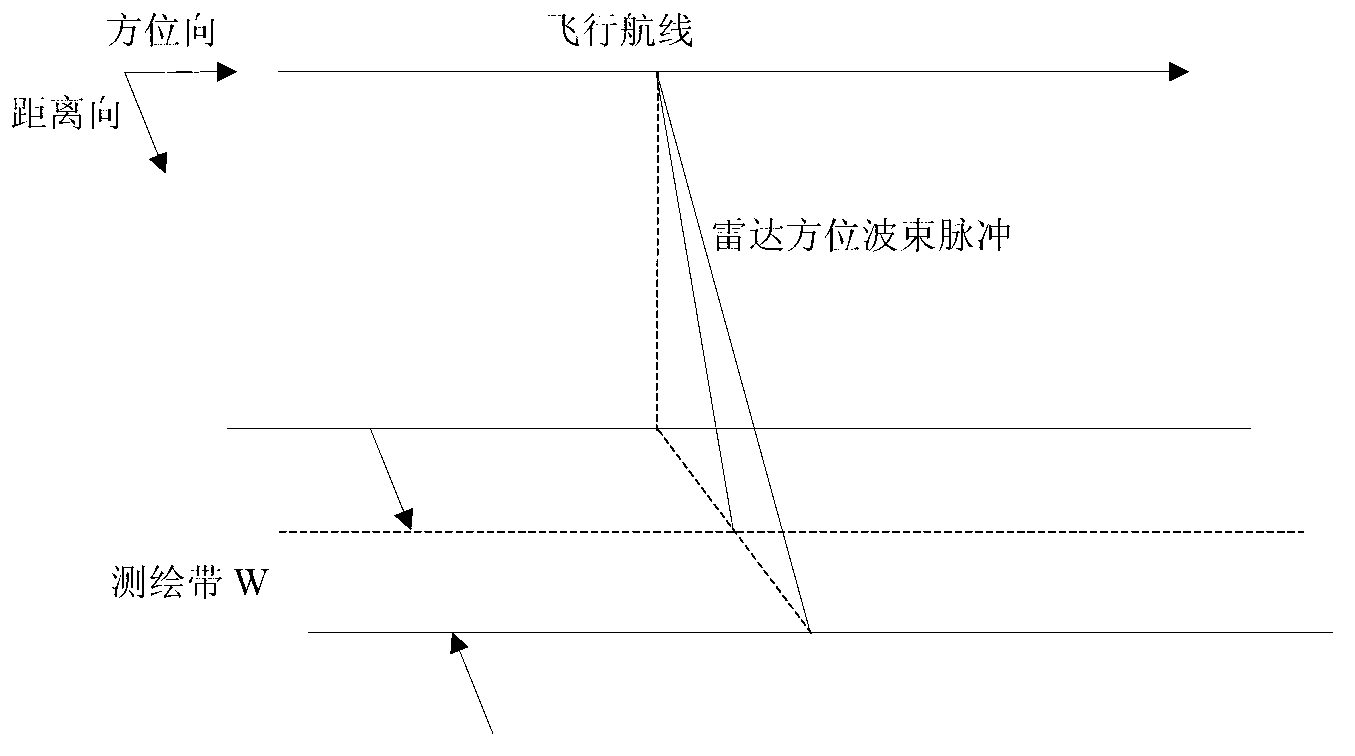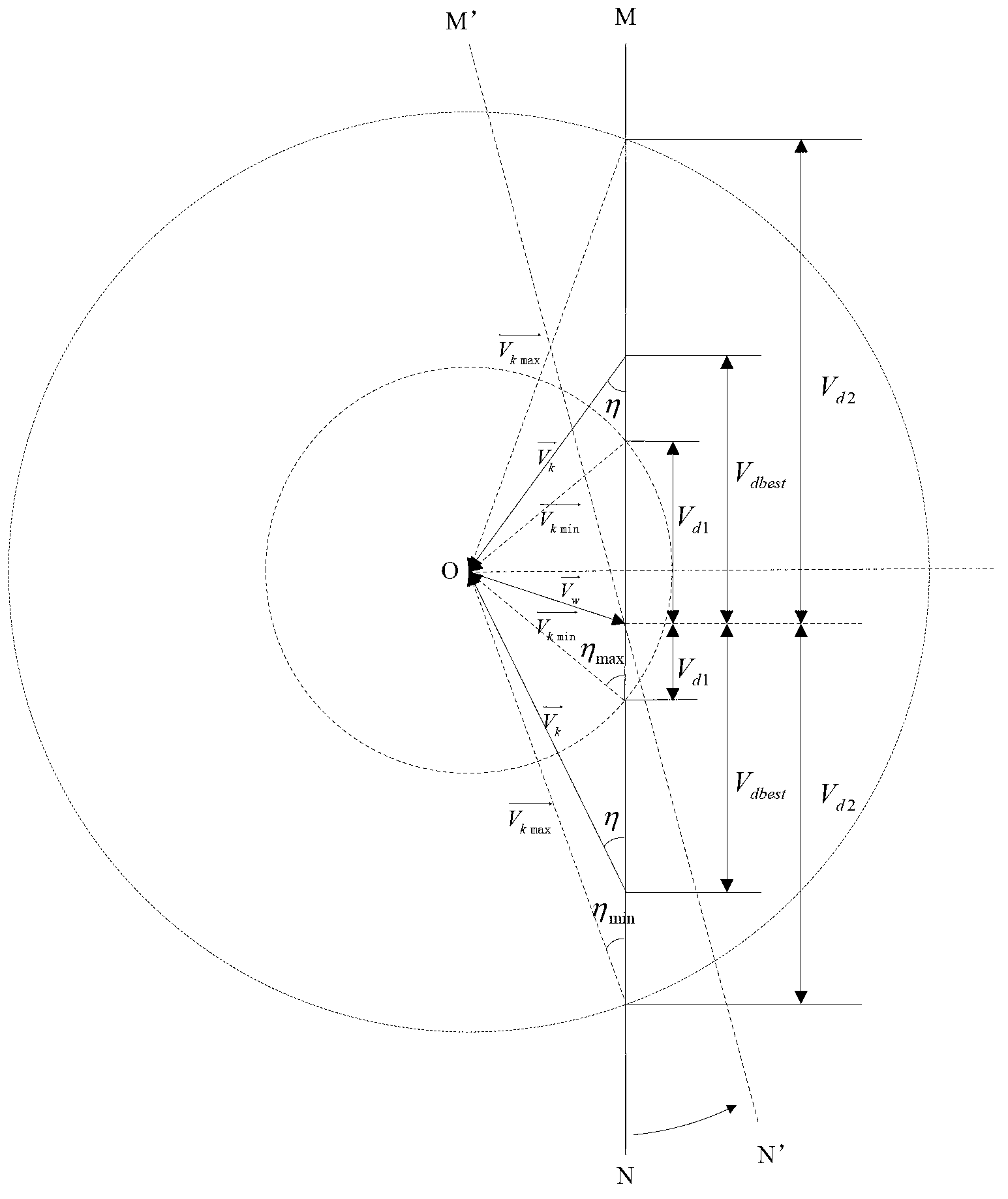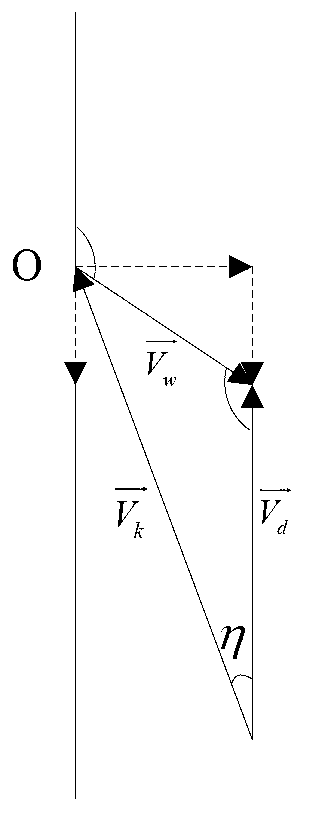Airborne SAR (synthetic aperture radar) flying route arrangement method based on dynamic wind speed and direction adjustment
A technology of dynamic adjustment, wind speed and wind direction, applied in imaging systems, remote sensing, and observation fields, can solve problems such as incapability of imaging, insurmountability, and inability to work, and achieve the effects of improving imaging effects, improving imaging effects, and eliminating the impact of imaging
- Summary
- Abstract
- Description
- Claims
- Application Information
AI Technical Summary
Problems solved by technology
Method used
Image
Examples
Embodiment
[0054] The method for real-time route adjustment based on the measured wind speed and direction provided by the present invention will be further described below through specific examples and data.
[0055] The present invention is applied to the imaging of an airborne SAR system of an unmanned aircraft. The azimuth working angle range of the SAR radar stabilization platform loaded on the unmanned aircraft is ±18°, and the flight height of a certain imaging task is 1500m. When there is no wind, ground speed is equal to air speed, i.e. Vd=Vk=60m / s, and the concrete steps of applying the inventive method are:
[0056] Step 1: Initialize the route of the carrier aircraft and the relevant parameters of the SAR system;
[0057] According to the imaging mission requirements of the UAV, initialize and set the route, the direction of the route is 0°, and start flying in parallel to the specified route area. The airspeed of the UAV is V k The minimum value of V kmin = 40m / s and maxim...
PUM
 Login to View More
Login to View More Abstract
Description
Claims
Application Information
 Login to View More
Login to View More - R&D
- Intellectual Property
- Life Sciences
- Materials
- Tech Scout
- Unparalleled Data Quality
- Higher Quality Content
- 60% Fewer Hallucinations
Browse by: Latest US Patents, China's latest patents, Technical Efficacy Thesaurus, Application Domain, Technology Topic, Popular Technical Reports.
© 2025 PatSnap. All rights reserved.Legal|Privacy policy|Modern Slavery Act Transparency Statement|Sitemap|About US| Contact US: help@patsnap.com



